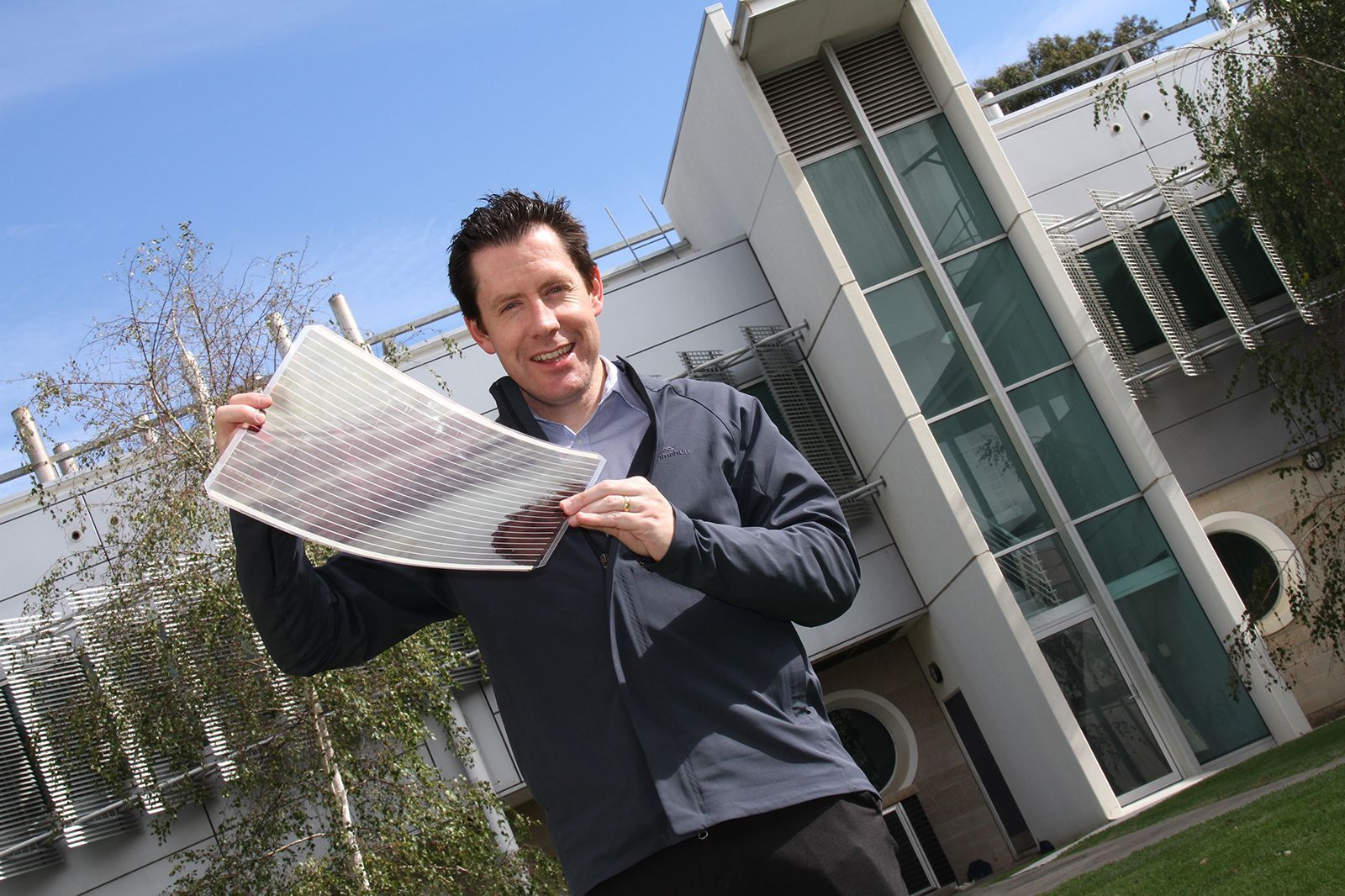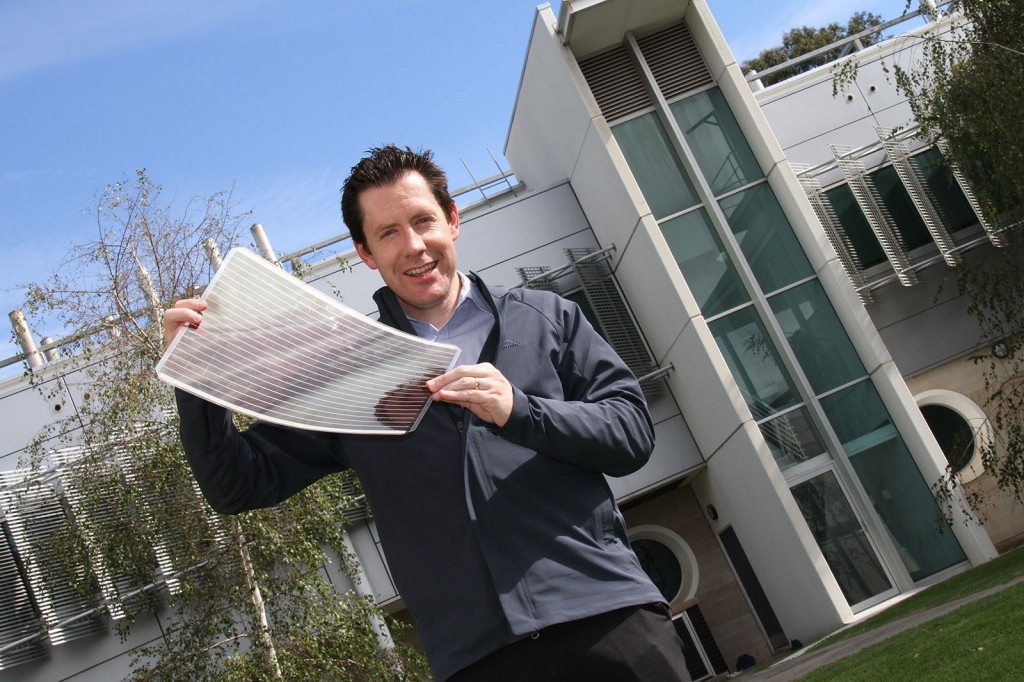
CSIRO materials scientist Dr. Scott Watkins holding one of the new photovoltaic cells. Courtesy of CSIRO.
Latest News
September 17, 2014
Although it may cause debate in some quarters, developing clean and sustainable forms of energy production are really in everyone’s best interests. Solar and air powered collection methods are generally the leading contenders for that kind of energy. In Australia, additive manufacturing (AM) has been added to the design mix for solar energy to create larger than ever photovoltaic cells.
The Victorian Organic Solar Cell Consortium (VICOSC) – a collaboration between CSIRO, The University of Melbourne, Monash University and industry partners – has developed a method to print organic photovoltaic cells the size of a standard sheet of office paper. The printer itself was constructed for a mere A$200,000 (a little over $180,000 American), which is a bargain when you consider the potential of the new cells.
 CSIRO materials scientist Dr. Scott Watkins holding one of the new 3D printed cells. Courtesy of CSIRO.
CSIRO materials scientist Dr. Scott Watkins holding one of the new 3D printed cells. Courtesy of CSIRO.“There are so many things we can do with cells this size,” said Scott Watkins, CSIRO materials scientist. “We can set them into advertising signage, powering lights and other interactive elements. We can even embed them into laptop cases to provide backup power for the machine inside.”
The new printer represents three years of work, in which researchers have increased the size of a photovoltaic cell from around an inch wide to the newest iteration which is nearly a foot wide. To build a cell, researchers print onto thin and flexible plastic or metal with semiconducting inks. The newly created printer can produce one cell every two seconds, which is fast enough to be considered for large manufacturing projects.
“Eventually we see these being laminated to windows that line skyscrapers,” said David Jones, VICOSC project coordinator and University of Melbourne researcher. “By printing directly to materials like steel, we’ll also be able to embed cells onto roofing materials.”
The solar cells currently produce 10-50 watts of power per square meter, but output levels could eventually increase to around 80 watts. The current generation of cells only really lasts long enough for researchers to conduct experiments, but future generations could provide energy for years at a time before requiring replacement.
Below you’ll find a video about the new solar cells.
Source: CSIRO
Subscribe to our FREE magazine, FREE email newsletters or both!
Latest News
About the Author
John NewmanJohn Newman is a Digital Engineering contributor who focuses on 3D printing. Contact him via [email protected] and read his posts on Rapid Ready Technology.
Follow DERelated Topics






